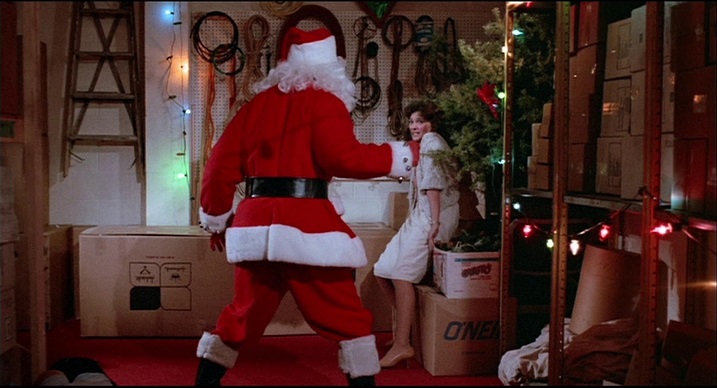On September 30th, 2019, when we launched “The Mustache and the Beard” website, I poked a little fun at my sister, Dee Gacek. I was speaking about my sister’s deep-rooted fear of clowns in a somewhat dismissive way, although I acknowledged that it was a true fear. The reality was that I was trying to get a laugh at her expense. I make no apologies, because this is the way we are, and have always been. My siblings and I are close. We were raised that way. My brother, Marc, was a joker and when he was entertaining everything was fodder. It didn’t matter how secret or embarrassing, it was sure to come out in one of Marc’s stories.
Fast forward to that “Launch Party” video. In the comments section, all three of my sisters demonstrated their support by commenting. Carrie Garcia sent several emojis; Virginia Dee Matos sent a GIF with an ancient Shaolin monk flicking his ample mustache and beard hairs; while Dee wrote an extensive suggestion about phobias. After all that time, I’m finally getting to this piece which I’m sure will take several posts over the course of a month maybe? It’s not completely written, but I think with Disastuary approaching, now is the perfect time to write this. Disaster movies and horror movies tend to exploit our fears. They seek to find that little spot in our psyche where we are weakest and apply the pressure there.

To begin with, I’m not a psychiatrist, psychologist, or diagnostician. I’ve studied psychology in school, but only to help as a counselor in ministry. This is an entertainment-type forum, and even though I will treat the subject-matter with some degree of seriousness, my main goal is two-fold: to be informative; to be entertaining. The information here is culled from disparate sources, and although this is not an academic paper, I will give citations where I feel it is warranted. I’m not writing this as an authority on the subject — merely as a seeker of information and conveyor of such. Special thanks to my sister, Dee Gacek, for the suggestion. I hope you and everyone else that reads this post, like it.
The Dictionary.com definition for phobia is “a persistent, irrational fear of a specific object, activity, or situation that leads to a compelling desire to avoid it.” I highlighted the word irrational, because I believe it is key to the understanding of phobias. Phobias are irrational, so trying to explain them, such that the subject stops fearing is illogical. There might be some logical reason for the fear, but just because the subject understands why, doesn’t mean that s/he will ever be able to cope with that fear. In the movie Silent Night, Deadly Night, a young boy witnesses a rapist dressed in a Santa costume murder his parents. For the rest of the child’s life he will be clausophobic. A psychiatric professional might be able to logically explain why s/he is clausophobic, but that doesn’t usually matter to the subject. S/he just wants to avoid Santa Claus.

The DSM-V is the Diagnostic and Statistical Manual of Mental Disorders. This huge tome was created by the American Psychiatric Association to aid in the diagnosis and treatment of illness. It expounds on the classification of phobias by firmly situating phobias in the area of an anxiety disorder. It is different from fear because the feeling is intensified by the irrational aspect that can not be explained rationally.
Phobias come in all shapes and sizes, and because of their irrationality, can have a tremendous, negative impact on lives. Consequently, they must be taken seriously. Because they are a mental disorder, they are not visible until a confrontation occurs. The most common reaction is to attempt to avoid the cause of the phobia, but some of the phobias are unavoidable. The fear of Halloween for instance, samhainophobia, can not be avoided. It therefore behooves the individual to stay indoors on October 31st and try to enjoy indoor activities antithetical to the season. Playing board games or video games may provide a welcome distraction.

Phobias fall into five major categories according to Healthline.com. These are:
- fears related to animals (spiders, dogs, insects)
- fears related to the natural environment (heights, thunder, darkness)
- fears related to blood, injury, or medical issues (injections, broken bones, falls)
- fears related to specific situations (flying, riding an elevator, driving)
- other (choking, loud noises, drowning)
Coulrophobia, the fear of clowns falls into the last category of other. There are disparate reasons why people experience this fear, but an important thing to note is that panic attacks are usually a result of confronting a phobia. The panic attacks are so uncomfortable — difficulty breathing, cold sweat, quickened heart-rate — that the subject does all they can to avoid the inciting confrontation.

For the next post, I will talk about specific phobias, and the possible therapies available. Yeah, Dee, I think we’re going to explore your fear, and see if we can come up with some answers.
Thanks for looking into the very real Phobia related to clowns. I don’t mind being the subject for this introspective….. next time however…. no freaking photos jerk! ❤️❤️❤️❤️ I love you more doofus!
LikeLiked by 1 person
I like to add art to make the article more visual, Sis. Trust me when I say that these pictures were pretty tame in comparison to what is out there. Clown pictures always seem to have a sinister quality. Anyway, exposure therapy is an important method of coping. I could have chosen worse.
LikeLike
I’ve been looking for this kind of article is great and let
me help someone, how i end anxiety and panic attacks here: https://bit.ly/2KYwZ5H
LikeLike
I’ve been looking for this kind of article is great and let me help someone, how i end anxiety and panic attacks here: https://bit.ly/2KYwZ5H
LikeLike